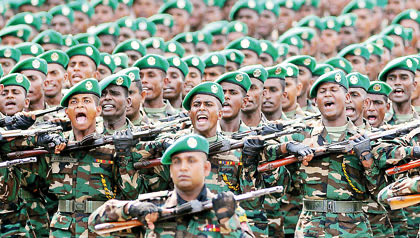
File photograph: Soldiers from Sri Lanka's Gajaba Regiment
This week marked 21 years since the Mirusuvil massacre, where Sri Lankan soldiers murdered eight Tamil civilians in Jaffna, including three children, before dumping their bodies in a mass grave.
Earlier this month, the US State Department announced that Sunil Rathnayake, one of the soldiers involved in the massacre, would be barred from entry to the United States over his role in the killings.
Despite being convicted of the massacre and sentenced to death in 2015, Rathnayake was pardoned last year by Sri Lankan president Gotabaya Rajapaksa and has since been released. No other Sri Lankan soldiers have ever been convicted for the crime.
Background
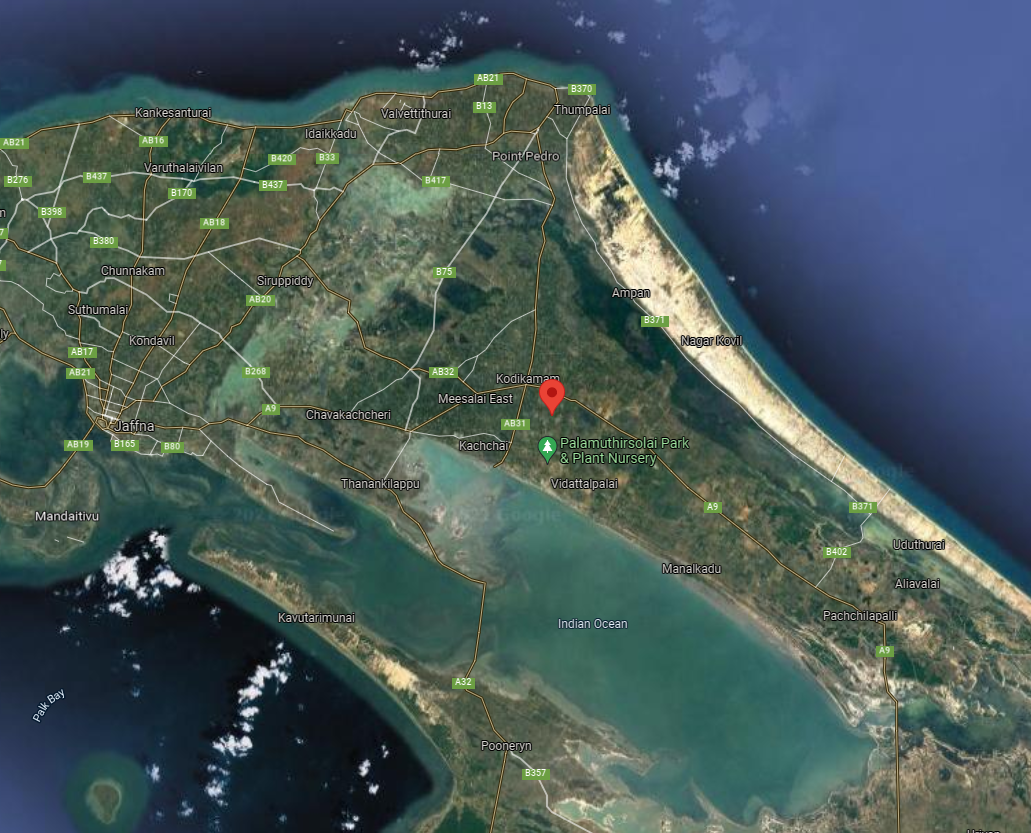
On December 19, 2000, at least nine displaced Tamil villagers had travelled by bicycle to visit their abandoned houses in the village of Mirusuvil, located in the Jaffna district.
Residents had been displaced from the village following Sri Lankan military occupation of the area. Having suffered the loss of Elephant Pass to the LTTE, the military had retreated to positions further North in the Jaffna peninsula and had now occupied regions around Mirusuvil.
This particular group of Tamils had been displaced to a camp at Udupitty.
The group had obtained prior permission from the Sri Lanka military to visit their homes and see their properties, as was the usual procedure for displaced Tamils. Many only visited during the day, to ensure they would leave before nightfall.
The group included Ponnadurai Maheshwaran, Raviwarman, Thaivakulasingham, Nadesu Jayachandran, Wilvarasa and his two sons— 5-year-old Prasad and 13-year-old Pradeepan Jayachandran, Gnanachandran, and his 15- year-old son Shanthan.
21-year-old Maheshwaran would be the sole survivor.
Occupying the area was the Sri Lankan military, with the Special Operations Unit of the 6th Gajaba Regiment having been airlifted into the region and the military’s elite Long Range Reconnaissance Patrol (LRRP).
The massacre
As the group was leaving Mirusuvil, at least two Sri Lankan soldiers confronted them. One soldier was carrying a gun and the other a knife, according to the testimony of Maheshwaran.
"You are all Tigers," the soldiers reportedly told the group of men and children, demanding they all be marched to the nearby military camp for questioning. The villagers were made to kneel on the ground, as they were interrogated and beaten.
Four more soldiers soon arrived.
Maheswaran recalled how the two soldiers blindfolded him and tied his hands with the sarong he was wearing, as they assaulted him. They pulled him up by his legs and hands and threw him on the ground and against a barbed wire fence. He lost consciousness from the assault.
When he regained consciousness, his blindfold has partially slipped and he was alone. He reports he was then marched past a cesspit, where he saw pools of blood on the ground and noticed movements from inside the pit.
Maheswaran sensed what may happen to him next.
He pushed through two soldiers and ran for his life, wearing just his underwear.
He eventually reached the home of Sinnaiah Wilvarasa, one of the men who he had travelled to Mirusuvil with. He borrowed a sarong and spent the night at his aunt’s house who lived nearby. The next morning, he returned back to Karaveddy, where his parents had been desperately searching for him.
His mother had sought the help of the Eelam Peoples Democratic Party (EPDP), a Sri Lankan state-backed paramilitary group. They admitted him into a nearby hospital for treatment of his injuries. Two days later, he was visited by Sri Lankan military police.
Revisiting the murder scene
On December 24, members of the Sri Lankan military police visited Maheswaran once more to question him about the fate of the villagers he had gone to Mirusuvil with. They were all missing. He agreed to take them back to Mirusuvil, to where he had last seen them and the location of his assault.
Accompanied by local officials and members of the EPDP, Maheswaran went back to the cesspit in Mirusuvil. Blood stains on the concrete slab covering it were still present.
As this group of Sri Lankan military officials, local political figures and Maheswaran’s family examined the area, a group of Sri Lankan soldiers approached them. Maheswaran began shouting.
He recognised the men. Two of the soldiers that approached that group on December 24, were the very same men that had blindfolded and assaulted him. They were later identified as Sunil Rathnayake and Mahinda Kumarasinghe.
As the soldiers walked towards the group Maheswaran was clinging on to his father and shouting, according to Major Sydney de Soyza, the officer in charge of the Military Police in the Jaffna Peninsula who had accompanied the group. The two soldiers meanwhile “had become restless and had shown signs of fear,” he added.
The area was then sealed off by the Sri Lankan military police and a total of five soldiers, including Rathnayake and Kumarasinghe, were taken into custody.
The bodies of the eight missing villages were found, loosely buried in a mass grave.
Throats slit
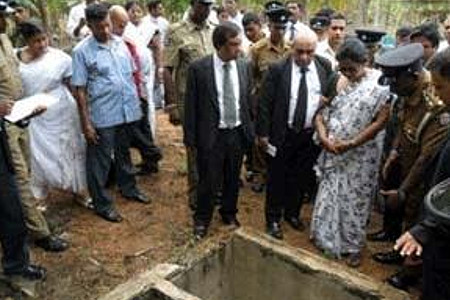
On December 26, Dr. Sinnathurai Kadiravelu, the District Medical Officer who was present when the bodies were dug out of their grave, carried out the post-mortem on the bodies.
His findings were cited in the Supreme Court records, of which an excerpt has been reproduced below.
The doctor had observed a solitary cut injury on the front of the neck about 2 inches deep, on each of the deceased and had opined that death had resulted due to shock and hemorrhage resulting from the cut injury on the neck.
The doctor had also said the cut injury had severed the main two arteries on either side of the neck and which was necessarily fatal. In the course of the hearing it was contended by the learned Deputy Solicitor General that the person or persons who were responsible for the killings had been cautious in tactically resorting to a silent mode of killing quite unlike the use firearms which would have caused alarm to the warring factions, given the volatility in the area at the relevant time.
Thus, the learned DSG submitted that it is a factor indicating that the persons responsible for the killings were well aware of the war situation and had taken precautions to avoid making any noise.
The youngest victim was 5-year-old Prasad. Only two of the bodies were reportedly found with their underwear. The rest were completely naked.
The trial
.jpg)
In the week that followed, thirteen Sri Lankan troops including two officers were arrested in connection with the massacre.
In a letter to then-Sri Lankan president Chandrika Kumaratunge, TNA MP Mavai Senathirajah called for further excavations in Mirusuvil, after reports that a woman’s body was seen partially buried in the area, leading to suspicions that there are other mass graves. However, no further excavations were carried out.
Maheswaran would go on to identify five soldiers in subsequent identity parades. The soldiers are listed below.
R.M. Sunil Ratnayake
R.W. Senaka Munasinghe
T.M. Jayaratne
S.A. Pushpa Saman Kumara
Gamini Munasinghe
This case was initially taken up at the Chavakachcheri Magistrate’s Court, but then was transferred to the Anuradhapura Magistrate’s Court at the request of the accused Sri Lankan soldiers. They alleged that holding the case in Chavakachcheri would pose a threat to their lives.
Subsequently, the Chief Justice appointed a trial-at-bar at the High Court in Colombo. Following years of delays, a verdict was finally reached in 2015 and Ratnayake was found guilty. He was sentenced to death over the massacre.
At the time of the 2015 conviction, Together Against Genocide released a statement welcoming the sentencing, but added “much more” needed to be done to end impunity on the island.
“Even though the war has ended, the racial hatred is far from resolved,” TAG said.
“The open support for the convicted soldier as a ‘War Hero’ clearly shows that racial tensions are still extremely high. This racial hatred prevents justice for the Tamil victims of this and other massacres. There is a clear reluctance among the majority ethnic Sinhala population to hold SLA forces responsible for their war crimes.”
All the other soldiers however, were cleared of all charges.
The pardon
Despite his sentences, several Sinhala nationalist lawmakers spent years demanding his release – a call that held widespread sway across the Sinhala south.
In early 2020, rumours began circulating that Ratnayake may be granted a presidential pardon and released from prison.
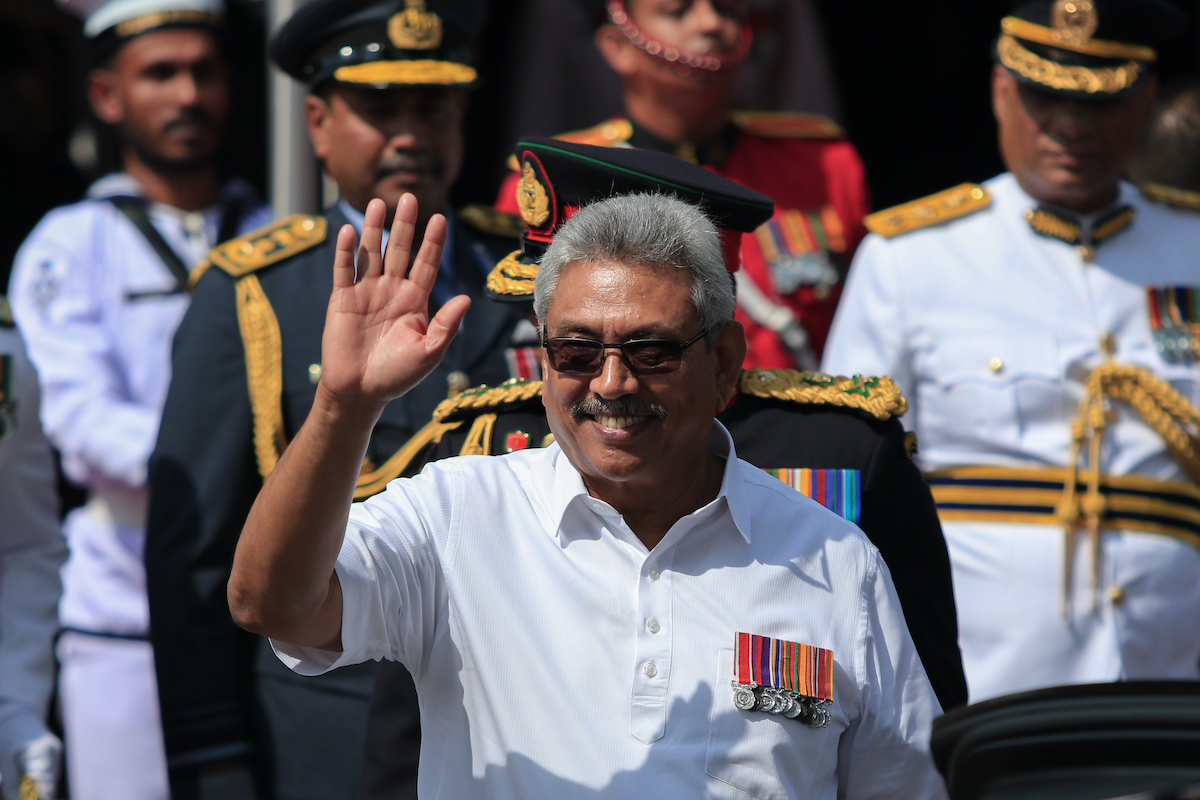
“Now we have got information that the government has taken measures to release 34 members of the intelligence and Sunil Ratnayake, as mentioned during the Gotabaya Rajapaksa election campaign,” said UNP MP Ajith Perera.
“That is how a leader who does what they say works,” continued Perera. "Therefore I would like to extend my gratitude to president Gotabaya Rajapakse and Minister of Justice Nimal Siripala De Silva for taking this decision.”
In March 2020, to widespread dismay amongst Tamils and human rights organisations around the world, Ratnayake was pardoned and released from prison.
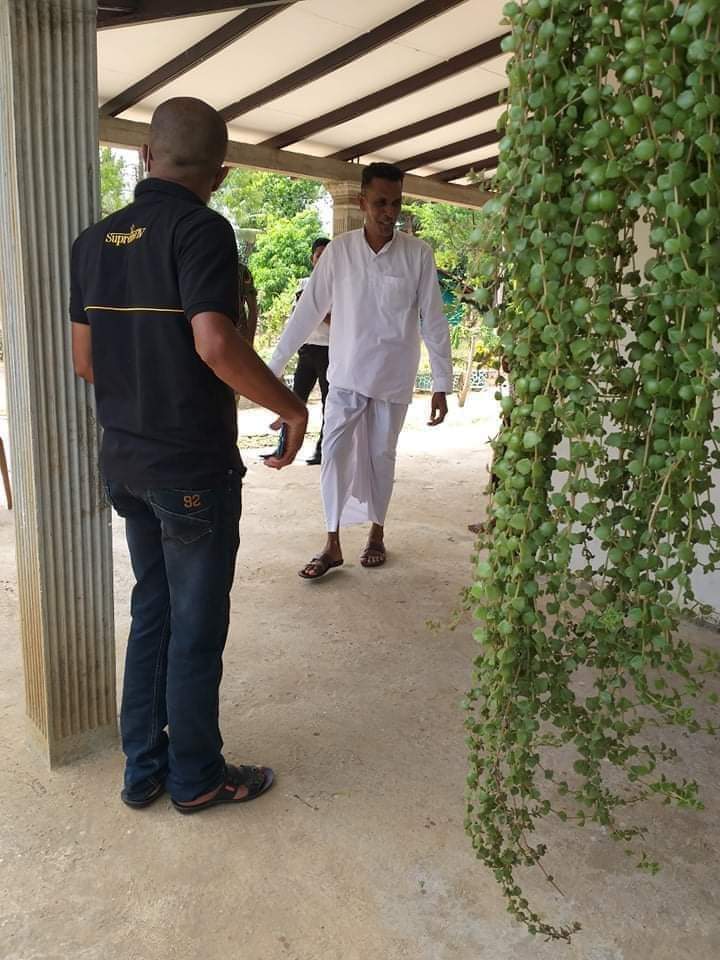
____
Read more on the massacre from the Center for Human Rights and Development here, from Center for Policy Alterantives here and here, and Human Rights Watch here.
Read the Supreme Court record on the case here.
Read a statement from Maheswaran (in Tamil) here.
